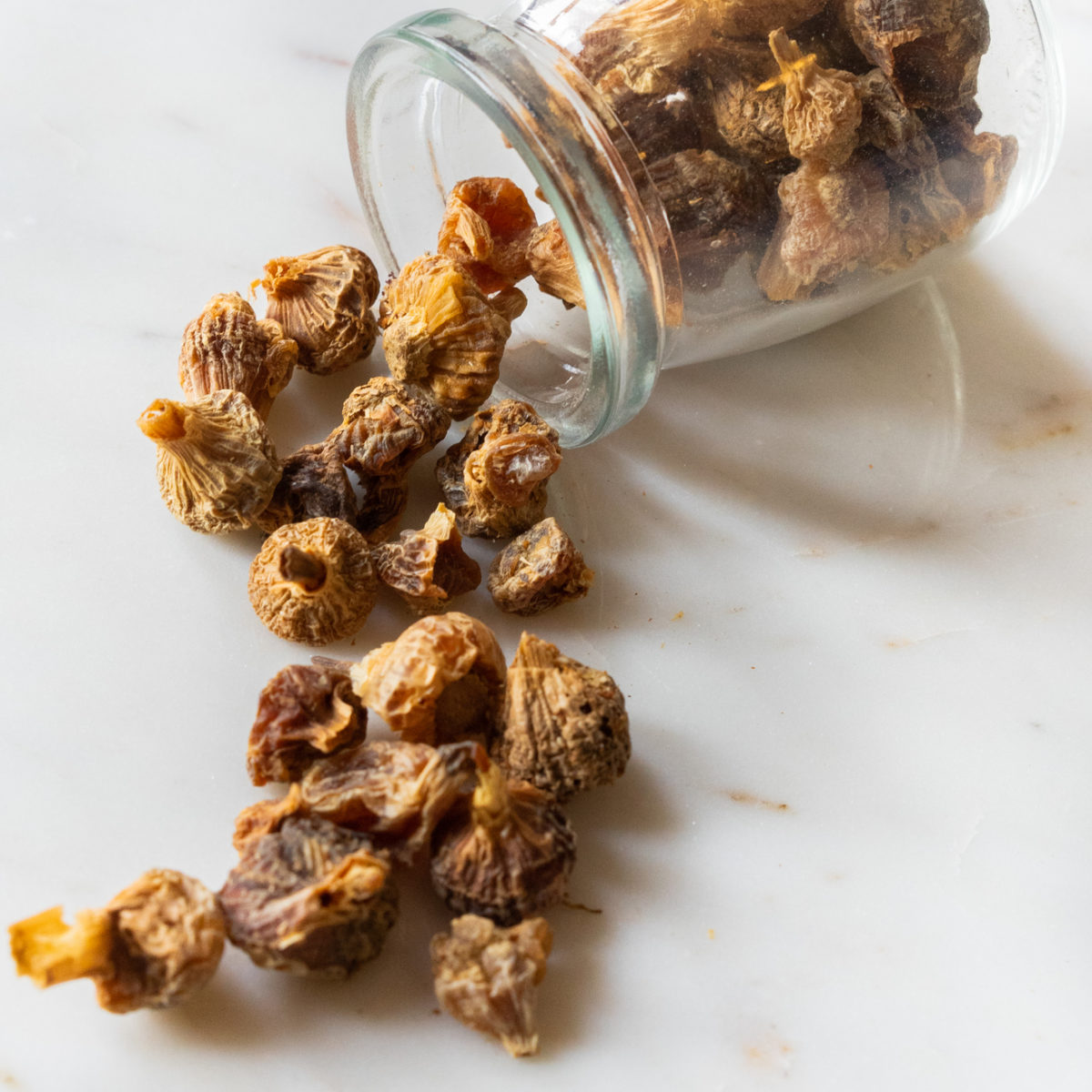
COMMON NAME (Chinese Name)
Chinese Arborvitae (Cèbǎi & Bai Zi)
BOTANICAL NAME
Platycladus Orientalis
USES
The most common usages for Chinese arborvitae are for immunity-boosting, antimicrobial and antifungal benefits, as well as their insecticidal properties. Leaf-specific extracts may also be anti-inflammatory, antioxidant, diuretic, and hair-growth-promoting.
Conversely, extract made from the fruit of Chinese arborvitae plants has some antimicrobial properties, including potentially fighting E. Coli, candida, and staph infections as well as balancing gut bacteria. Supplements made from the seeds of Chinese arborvitae plants (often distinctly called Bai Zi) have additional and different properties, most notably sedative effects. What’s more, anecdotal evidence suggests that Chinese arborvitae has a long history of use as a tonifying remedy (to nourish, replenish, and re-energize the body), and there is some empirical evidence to support long-standing claims of Chinese arborvitae’s generally tonifying and lifespan-extending effects.
PREPARATION & ADMINISTRATION
Not to be confused with Eastern Arborvitae (Thuja occidentalis), which — though often used synonymously — has different medicinal effects. Historical TCM remedies use only the leafy twigs of Chinese arborvitae plants, though contemporary extracts and supplements make use of other parts of the plant. Today, Chinese arborvitae supplements for oral use can include (separately) fruits, leaves, and seeds.
PRECAUTIONS
Short-term and low-dose use of Chinese arborvitae supplements are generally safe for most healthy adults, though long-term and high-dose use may be toxic. Symptoms of Chinese arborvitae toxicity (or thujone toxicity) include restlessness, dizziness, nausea and vomiting, mental changes, and serious side-effects like seizures and kidney damage. Women who are pregnant should never take these supplements due to the presence of thujone in Chinese arborvitae extracts.
You should consult with a certified herbalist, physician or other qualified healthcare professional before taking Chinese arborvitae.
REFERENCES
Edwards, Sarah E., et al. Phytopharmacy: an Evidence-Based Guide to Herbal Medicinal Products. Wiley Blackwell, 2015.
Grassmann, J., and E.F. Elstner. “ESSENTIAL OILS: Properties and Uses.” Encyclopedia of Food Sciences and Nutrition (Second Edition), Academic Press, 6 Dec. 2003, https://www.sciencedirect.com/science/article/pii/B012227055X004259.
Hassanzadeh, M.k., et al. “Chemical and Antimicrobial Studies of Platycladus Orientalis Essential Oils.” Pharmaceutical Biology, vol. 39, no. 5, 2001, pp. 388–390., doi:10.1076/phbi.39.5.388.5894.
Kim, Min-Gi, and Hoi-Seon Lee. “Growth-Inhibiting Effects and Chemical Composition of Essential Oils Extracted from Platycladus Orientalis Leaves and Stems toward Human Intestinal Bacteria.” Food Science and Biotechnology, vol. 24, no. 2, 2015, pp. 427–431., doi:10.1007/s10068-015-0056-5.
Lin, Zehua, et al. “Physicochemical Characterization of a Polysaccharide Fraction from Platycladus Orientalis (L.) Franco and Its Macrophage Immunomodulatory and Anti-Hepatitis B Virus Activities.” Journal of Agricultural and Food Chemistry, vol. 64, no. 29, 2016, pp. 5813–5823., doi:10.1021/acs.jafc.6b01387.
Liu, Haibin, et al. “Lifespan Extension by n-Butanol Extract from Seed of Platycladus Orientalis in Caenorhabditis Elegans.” Journal of Ethnopharmacology, Elsevier, 21 Mar. 2013, https://www.sciencedirect.com/science/article/pii/S0378874113001621.
Mohammadhosseini, Majid, et al. “The Relationship Between Chemical Composition of the Essential Oils OfPlatycladus Orientalis(L.) Franco and Soils Contamination in National Oil Company of Shahrood, Iran.” Journal of Essential Oil Bearing Plants, vol. 20, no. 5, Mar. 2017, pp. 1209–1225., doi:10.1080/0972060x.2017.1396927.
Sanei-Dehkordi, Alireza, et al. “Essential Oil Composition and Larvicidal Evaluation of Platycladus Orientalis against Two Mosquito Vectors, Anopheles Stephensi and Culex Pipiens.” Journal of Arthropod-Borne Diseases, Aug. 2018, pp. 101–107., doi:10.18502/jad.v12i2.35.
Shan, Ming-Qiu, et al. “Platycladus Orientalis Leaves: A Systemic Review on Botany, Phytochemistry and Pharmacology.” The American Journal of Chinese Medicine, vol. 42, no. 03, 2014, pp. 523–542., doi:10.1142/s0192415x14500347.
Zhang, Yan, et al. “Hair Growth Promoting Activity of Cedrol Isolated from the Leaves of Platycladus Orientalis.” Biomedicine & Pharmacotherapy, vol. 83, 2016, pp. 641–647., doi:10.1016/j.biopha.2016.07.022.
